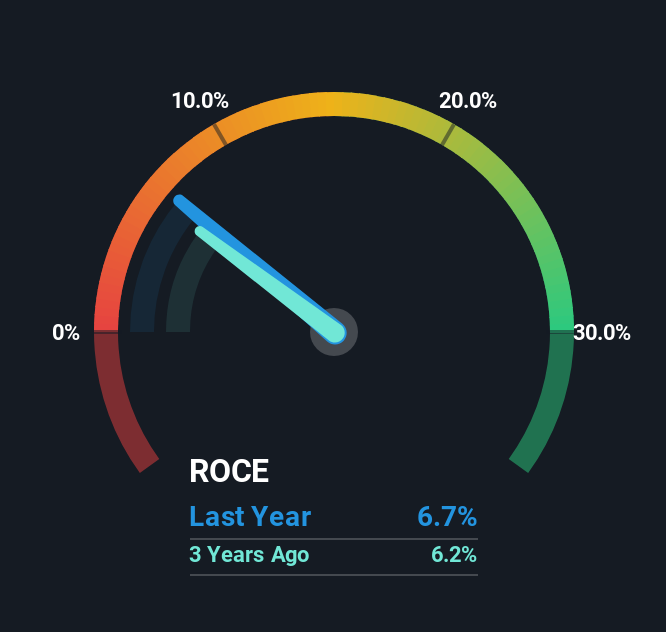- Hong Kong
- /
- Telecom Services and Carriers
- /
- SEHK:788
Returns On Capital At China Tower (HKG:788) Have Stalled
What are the early trends we should look for to identify a stock that could multiply in value over the long term? Typically, we'll want to notice a trend of growing return on capital employed (ROCE) and alongside that, an expanding base of capital employed. Put simply, these types of businesses are compounding machines, meaning they are continually reinvesting their earnings at ever-higher rates of return. In light of that, when we looked at China Tower (HKG:788) and its ROCE trend, we weren't exactly thrilled.
What Is Return On Capital Employed (ROCE)?
Just to clarify if you're unsure, ROCE is a metric for evaluating how much pre-tax income (in percentage terms) a company earns on the capital invested in its business. Analysts use this formula to calculate it for China Tower:
Return on Capital Employed = Earnings Before Interest and Tax (EBIT) ÷ (Total Assets - Current Liabilities)
0.067 = CN¥16b ÷ (CN¥331b - CN¥89b) (Based on the trailing twelve months to June 2025).
Therefore, China Tower has an ROCE of 6.7%. On its own that's a low return on capital but it's in line with the industry's average returns of 6.9%.
See our latest analysis for China Tower

Above you can see how the current ROCE for China Tower compares to its prior returns on capital, but there's only so much you can tell from the past. If you'd like to see what analysts are forecasting going forward, you should check out our free analyst report for China Tower .
So How Is China Tower's ROCE Trending?
Things have been pretty stable at China Tower, with its capital employed and returns on that capital staying somewhat the same for the last five years. It's not uncommon to see this when looking at a mature and stable business that isn't re-investing its earnings because it has likely passed that phase of the business cycle. With that in mind, unless investment picks up again in the future, we wouldn't expect China Tower to be a multi-bagger going forward. That probably explains why China Tower has been paying out 74% of its earnings as dividends to shareholders. Most shareholders probably know this and own the stock for its dividend.
The Key Takeaway
In summary, China Tower isn't compounding its earnings but is generating stable returns on the same amount of capital employed. Unsurprisingly then, the total return to shareholders over the last five years has been flat. All in all, the inherent trends aren't typical of multi-baggers, so if that's what you're after, we think you might have more luck elsewhere.
If you'd like to know about the risks facing China Tower, we've discovered 1 warning sign that you should be aware of.
While China Tower may not currently earn the highest returns, we've compiled a list of companies that currently earn more than 25% return on equity. Check out this free list here.
New: AI Stock Screener & Alerts
Our new AI Stock Screener scans the market every day to uncover opportunities.
• Dividend Powerhouses (3%+ Yield)
• Undervalued Small Caps with Insider Buying
• High growth Tech and AI Companies
Or build your own from over 50 metrics.
Have feedback on this article? Concerned about the content? Get in touch with us directly. Alternatively, email editorial-team (at) simplywallst.com.
This article by Simply Wall St is general in nature. We provide commentary based on historical data and analyst forecasts only using an unbiased methodology and our articles are not intended to be financial advice. It does not constitute a recommendation to buy or sell any stock, and does not take account of your objectives, or your financial situation. We aim to bring you long-term focused analysis driven by fundamental data. Note that our analysis may not factor in the latest price-sensitive company announcements or qualitative material. Simply Wall St has no position in any stocks mentioned.
About SEHK:788
China Tower
Provides telecommunication tower infrastructure services in the People's Republic of China.
Excellent balance sheet and good value.
Similar Companies
Market Insights
Community Narratives



